When international sanctions cut Iran off from the global banking system, the country didn’t just sit back and wait. It built its own financial pipeline-using Bitcoin, Ethereum, and a network of digital exchanges that operated in the shadows of traditional finance. By 2025, Iran had turned cryptocurrency from a fringe tech trend into a state-backed tool for survival. But this strategy, while clever, came with massive risks, technical failures, and unintended consequences that are still unfolding.
Why Iran Turned to Crypto
Iran’s economy has been under heavy sanctions since at least 2010, with banks in the U.S., Europe, and even parts of Asia refusing to process transactions involving Iranian entities. Oil exports, once the lifeblood of the national budget, became nearly impossible to sell without facing penalties. Foreign currency became scarce. Inflation hit over 40% in 2024. People couldn’t buy medicine, cars, or even basic electronics through normal channels. That’s when crypto stepped in. Bitcoin and other digital assets offered something traditional banking couldn’t: anonymity, speed, and global reach. Unlike banks, blockchain networks don’t ask for passports or compliance forms. You send Bitcoin from Tehran to Dubai, and it arrives in minutes. No intermediary. No freeze. No rejection. The Iranian government didn’t outlaw crypto-it embraced it, but under strict control. In early 2025, the Central Bank of Iran banned rial-based payment gateways for exchanges. That sounds like a crackdown, but it wasn’t. It was a move to force all crypto transactions through state-monitored channels. The goal? Stop citizens from quietly moving money abroad while still letting the regime use crypto to import goods and fund key sectors.The Mining Boom: Powering Sanctions Evasion
Iran’s most surprising crypto asset wasn’t a wallet or an exchange-it was electricity. The country has cheap natural gas and abundant power plants. So it started mining Bitcoin. Not a few rigs in basements. Not hobbyists. Entire farms, sometimes powered by stolen grid electricity, running 24/7. By 2022, Iran was producing nearly 5% of all new Bitcoin globally. Over 10,000 licensed mining operations were registered. The math was simple: burn gas to make Bitcoin, sell Bitcoin for dollars or euros, then use those dollars to buy what sanctions blocked-pharmaceuticals, semiconductors, aviation parts. But there was a cost. Power outages became common. Cities like Tehran and Isfahan faced rolling blackouts as mining rigs sucked up energy meant for homes and hospitals. In 2025, the government started shutting down unlicensed miners-but the licensed ones kept running, quietly feeding the state’s foreign currency pipeline.Nobitex: The Heart of Iran’s Crypto Network
If Iran’s crypto strategy had a nerve center, it was Nobitex. Launched in 2018, it grew into the country’s largest digital asset exchange, with over 11 million users. Iranians used it to buy Bitcoin with rials, then send those coins overseas. Importers used it to receive payment for goods. Even government agencies reportedly used Nobitex to move funds. But Nobitex wasn’t just a marketplace. Analysis by Elliptic, a blockchain intelligence firm, found strong links between Nobitex wallets and financial activity tied to the Islamic Revolutionary Guard Corps (IRGC). The exchange became a bridge between ordinary Iranians trying to survive and the state’s sanctioned operations. Then, on June 18, 2025, everything changed. A sophisticated hack drained over $90 million from Nobitex’s wallets. Bitcoin, Ethereum, Tether, Tron-all gone. The breach wasn’t just a technical failure. It was a systemic one. The exchange had no multi-sig security, no cold storage backups, and no insurance. For Iran’s crypto strategy, it was a body blow.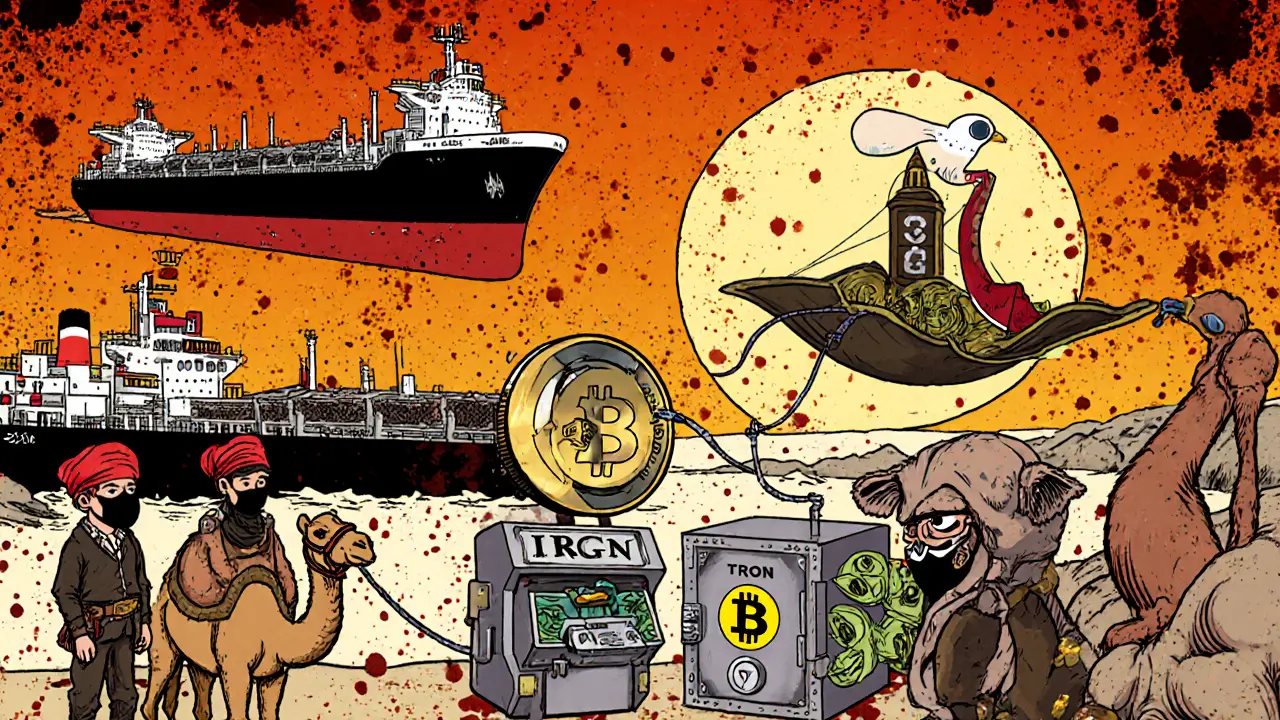
The 0 Million Shadow Network
While Nobitex was crumbling, another part of Iran’s crypto ecosystem was thriving: a $600 million shadow banking network exposed by the U.S. Treasury’s Office of Foreign Assets Control (OFAC) in September 2025. This network didn’t rely on exchanges. It used front companies in Turkey, the UAE, and Malaysia to buy crypto with oil proceeds. Iranian oil tankers would offload crude to intermediaries. Those intermediaries would pay in Bitcoin or USDT. The crypto would then be funneled through wallets linked to Arash Estaki Alivand, a key operator named by OFAC. From there, funds moved into real estate, luxury goods, and military imports. What made this network dangerous wasn’t just its size-it was its adaptability. It mixed traditional shell companies with blockchain transactions. It used Tron’s low fees and fast confirmations to avoid detection. And it worked. For two years, it moved over $100 million in crypto tied directly to Iranian oil sales.Legal, But Not Safe
Iran’s official stance? Cryptocurrency mining is legal. Crypto trading is legal. But using crypto for domestic payments? Illegal. Using it for imports? Allowed. The rules are contradictory, but the intent is clear: control the flow. The government requires every miner and exchange to get a license. All transactions must be reported. Wallets are monitored. Yet enforcement is patchy. Many miners still operate illegally. Many exchanges still let users withdraw to foreign wallets. And despite all the rules, Iran’s crypto ecosystem remains one of the least secure in the world. The Nobitex hack proved that. So did the fact that OFAC could trace over $100 million in transactions to specific wallet addresses. Blockchain is transparent. Every move leaves a trail. Iran thought it was hiding behind anonymity. But crypto doesn’t hide-it records.
The Backfire Effect
Iran’s crypto strategy was never meant to be a long-term solution. It was a stopgap. A way to survive sanctions until diplomacy changed. But it backfired in three big ways. First, it drained the country’s power grid. Energy meant for schools and factories went to mining rigs. Public anger grew. Second, it made Iran a target. The U.S., EU, and UK intensified sanctions on crypto-related entities. Any company doing business with an Iranian exchange now risks being cut off from the global financial system. Third, it exposed the regime’s vulnerabilities. The Nobitex hack didn’t just lose money-it lost trust. Ordinary Iranians who used crypto to buy food or pay medical bills suddenly found their accounts frozen or emptied. The state’s control over crypto didn’t protect them. It made them more vulnerable.What This Means for Global Trade
For businesses outside Iran, the message is clear: dealing with Iran through crypto is high-risk, high-reward, and increasingly dangerous. Even if you’re not directly sending crypto to Iran, if your supply chain involves intermediaries in Turkey, Azerbaijan, or the UAE who are moving Iranian oil proceeds via crypto, you could be caught in a sanctions net. Financial institutions are now scanning blockchain data for Iranian-linked addresses. Payment processors are flagging transactions that match known patterns. The era of easy crypto sanctions evasion is over. Blockchain intelligence tools like Chainalysis and Elliptic have mapped over 90% of Iran’s major crypto flows. Every wallet used in the shadow network has been tagged. Every exchange with IRGC ties is blacklisted. Iran’s crypto strategy didn’t break sanctions. It made them more visible.The Future: A Fragile System
As of late 2025, Iran’s crypto ecosystem is in retreat. Mining licenses are being revoked. New exchange regulations are tightening. Nobitex is rebuilding, slowly and under heavy scrutiny. The $600 million network is partially dismantled. Key figures have been sanctioned. Wallets are frozen. But the need hasn’t gone away. Inflation is still high. Sanctions are still in place. People still need to buy medicine. Factories still need parts. So the workarounds will continue. Smaller, decentralized exchanges are popping up. Peer-to-peer trading is growing. Telegram bots are replacing websites. The state may lose control of the system-but it won’t stop it. Iran’s crypto strategy was never about innovation. It was about desperation. And desperation doesn’t disappear with one hack or one sanction. It just finds a new way to move money.Is it legal to trade crypto with Iran?
No, it’s not legal for most foreign businesses or individuals to trade crypto directly with Iran under U.S. and EU sanctions. Even if you’re not sending money to the Iranian government, if your transaction supports sanctioned entities like the IRGC or involves known Iranian crypto addresses, you risk severe penalties-including asset freezes and criminal charges. Financial institutions now flag transactions linked to Iranian exchanges like Nobitex or wallets tied to the $600 million shadow network.
How did Iran use Bitcoin to bypass sanctions?
Iran mined Bitcoin using cheap domestic energy and sold it on international exchanges for dollars or euros. Those funds were then used to pay for imports like medical equipment, aviation parts, and semiconductors-goods blocked by sanctions. The government controlled the process through licensed mining farms and exchanges like Nobitex, ensuring the state got a cut while bypassing Western banks.
Why did the Nobitex hack matter so much?
Nobitex wasn’t just an exchange-it was the central hub for Iran’s entire crypto-based sanctions evasion system. Losing $90 million didn’t just hurt users; it exposed critical security flaws and shattered trust in the system. It proved that even state-backed crypto infrastructure is vulnerable to attacks, and that reliance on a single platform created a single point of failure.
Can blockchain tracking stop Iran’s crypto trade?
Yes, but not completely. Blockchain analysis tools like Chainalysis and Elliptic have successfully traced billions in Iranian crypto flows, leading to OFAC sanctions on dozens of wallets and exchanges. However, Iran is adapting-using privacy coins, mixing services, and decentralized peer-to-peer platforms. Tracking is getting harder, but not impossible. The trail still exists; it just takes more effort to follow.
Is cryptocurrency still used in Iran today?
Yes, but under tighter control. Mining licenses are being revoked, and exchanges face stricter reporting rules. Yet ordinary Iranians still use crypto to save money and buy imported goods. Peer-to-peer trading via Telegram and local apps is growing. The state no longer fully controls the system, but it still tries to monitor and tax it. Crypto isn’t gone-it’s just less visible and more risky.
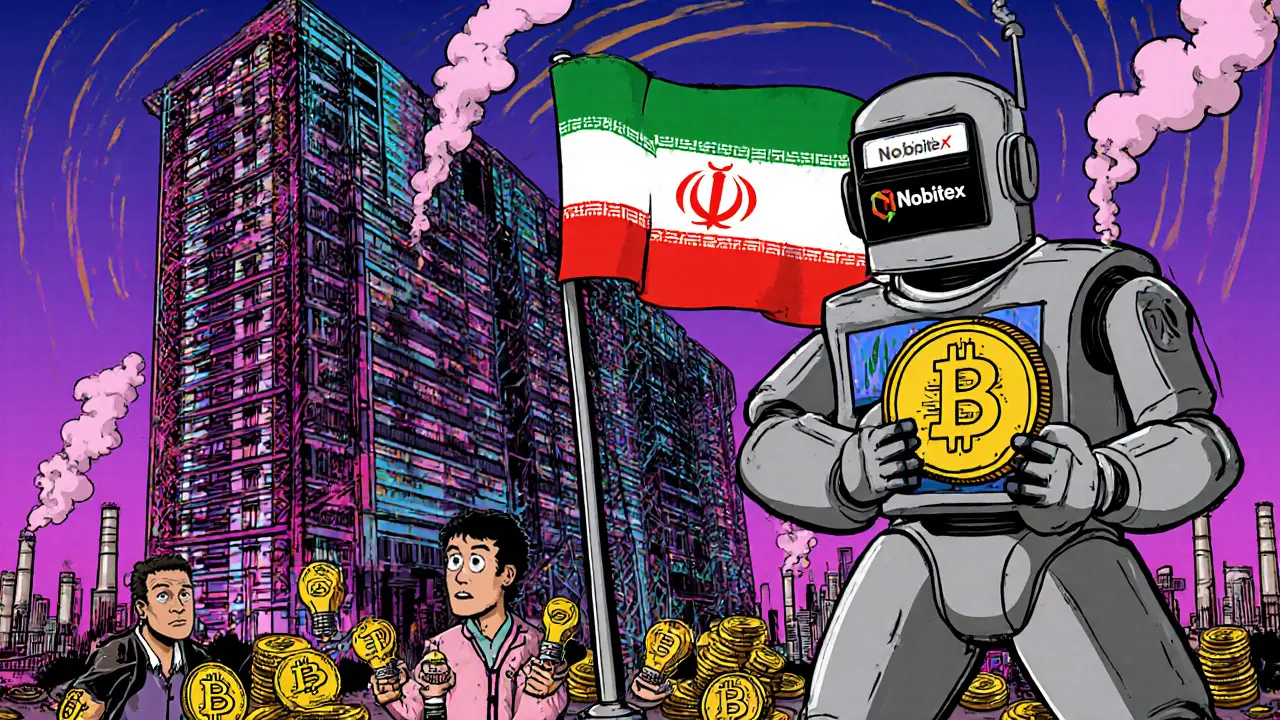
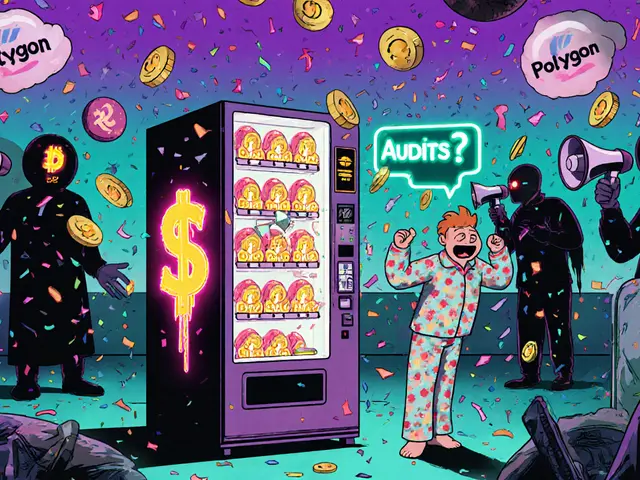


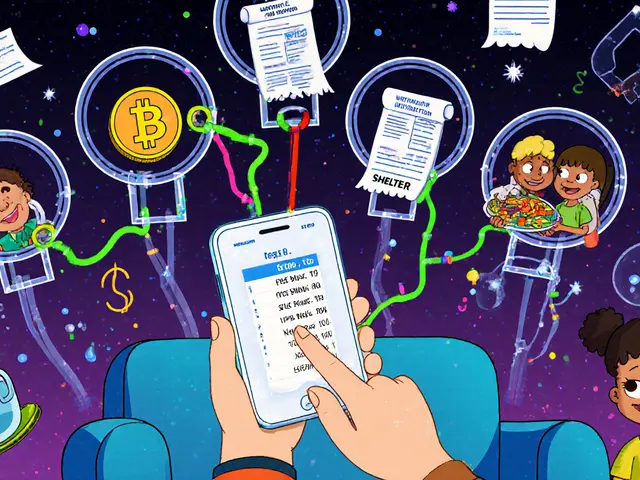
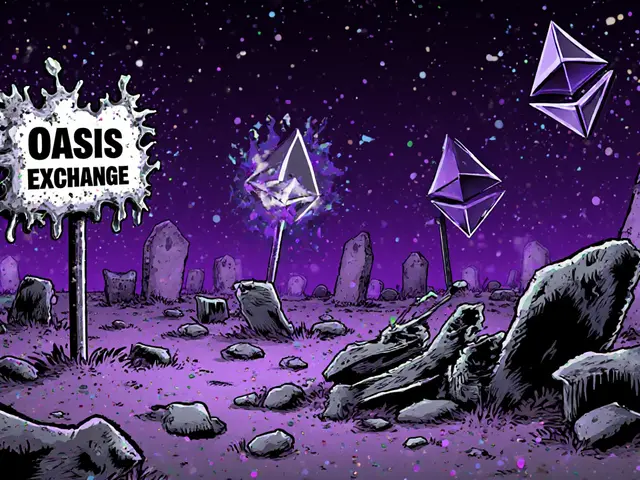
Noriko Yashiro
Interesting how desperation breeds innovation. Iran didn’t choose crypto because it was cool-it chose it because it had no other choice. The power outages are tragic, but I can’t blame people for trying to survive. Maybe the real lesson isn’t about blockchain, but about how sanctions hurt ordinary lives first.